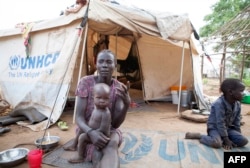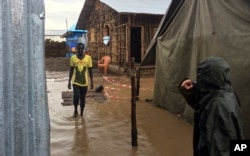Ethiopia is facing renewed ethnic conflict along its Western border. Since late January, what began as a dispute over land rights between the Nuer and Anyuak ethnic groups has spread, claiming dozens of lives.
The clash is, in part, a result of the influx of thousands of ethnic Nuer who have been displaced in the civil war in South Sudan and were forced to move into the Gambella region of Ethiopia.
Some of the displaced Nuer allegedly brought arms across the border, destabilizing an already tense region.
According to the United Nations High Commissioner for Refugees (UNHCR), there are about 280,000 South Sudanese refugees in the region. About 84 percent live in six refugee camps, and 16 percent live in host communities within the Gambella region.
Obang Metho, executive director of the Solidarity Movement for a New Ethiopia, a nonprofit organization promoting change in Ethiopia, said more than 50 people have died in the fighting.
‘Revenge after revenge’
He believes it began with a dispute over land rights between an Anyuak who is the driver of the regional leader and a Nuer who is the deputy chairman of a local university. Metho said the Nuer man shot and wounded the Anyuak man, causing some university students of both ethnicities to fight.
"That tension was very hard to control and, as a result of that, there were some Anyuak who heard this and that their family members were killed, and in other rural areas there were Anyuak who revenged on the Nuer," Metho said. "And this really became revenge after revenge."
Getachew Reda, Ethiopia's communications minister, said the violence escalated when armed people — including local police and some who were part of the regional government — tried to take advantage of the crisis for personal gain.
"Now, upon the request of the regional government, the federal government has intervened with the national defense forces, disarming members of the special police forces," he said. "So, yes, dozens of lives are lost, but the situation is totally under control now."
The ethnic tension comes on the heels of a protracted dispute with the Oromo ethnic group over a plan to expand the municipal borders of the capital, Addis Ababa.
The Anyuak people have also complained of mistreatment, alleging that the Ethiopian government used World Bank funds to push farmers off their land in Gambella.
Getachew, however, rejected the notion that Ethiopia has a larger problem with ethnic divisions.
"Ethnic clashes are the result of people, or government officials, not being able to address governance issues at every level, and what normally is a political problem ends up becoming [an] ethnic problem," he said.
"The overall solution for this challenge is not so much to write off the reality that there are so many ethnic groups, but to make sure that our development records actually benefit all aspects of society and, of course, all ethnic groups in this country should see a light at the end of the tunnel because the development dividend, the growth dividend, should equally benefit all our people."
Fallout from South Sudan
Movement across the South Sudan-Ethiopia border is not a new phenomenon.
Close ties and tensions between the Nuer and Anyuak date back centuries, and the modern border between the two nations does not delineate where either group lives.
The civil war in South Sudan between Nuers and Dinkas is now having a cascading effect on the region, leading to instability in Gambella, where most Nuers have fled, Metho said.
"I think some of the Anyuaks feel threatened by the refugees, and the United Nations also didn't [handle its] responsibility because some of the refugees — they came carrying their guns with them, and usually the refugees are not supposed to have guns," he said.
Thowat Pal, the chairman of the Ethiopian Patriotic Front, an opposition group working to change leadership in Ethiopia, blamed South Sudanese leaders for destabilizing the region.
"The instability of South Sudan is the cause of these illegal arms because when [former opposition leader and present South Sudanese Vice President] Riek Machar was mobilizing people, he was mobilizing tribal youth to fight for the interest of a plan which he has concocted in order to capture power by force," Pal said.
Pal fears that too many disputes in both Ethiopia and South Sudan fracture along ethnic lines.
"There's regionalization which is based on ethnicity," he said. "Some Ethiopians, nowadays, after the fall of the Derg, they don't consider themselves as Ethiopians. They consider themselves as ethnic communities of their own areas."











